On Location in “Cubicle”
Camille LeFevre has been watching Skewed Visions' monthly webcast, "Cubicle," and finds the series' genre-bending ruminations on place, work, and life in the modern office to be, on the whole, both intriguing and enlightening.
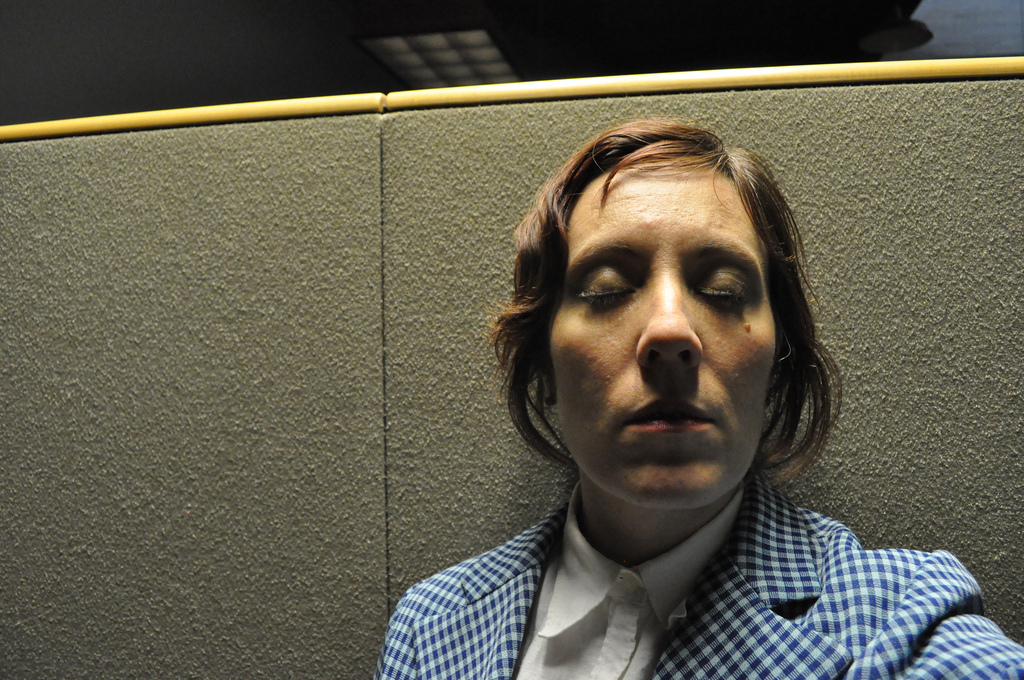
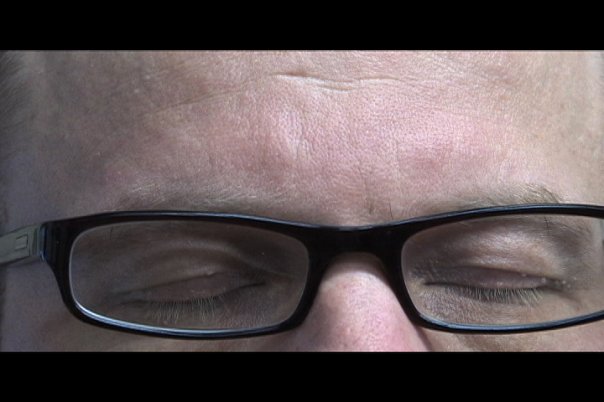
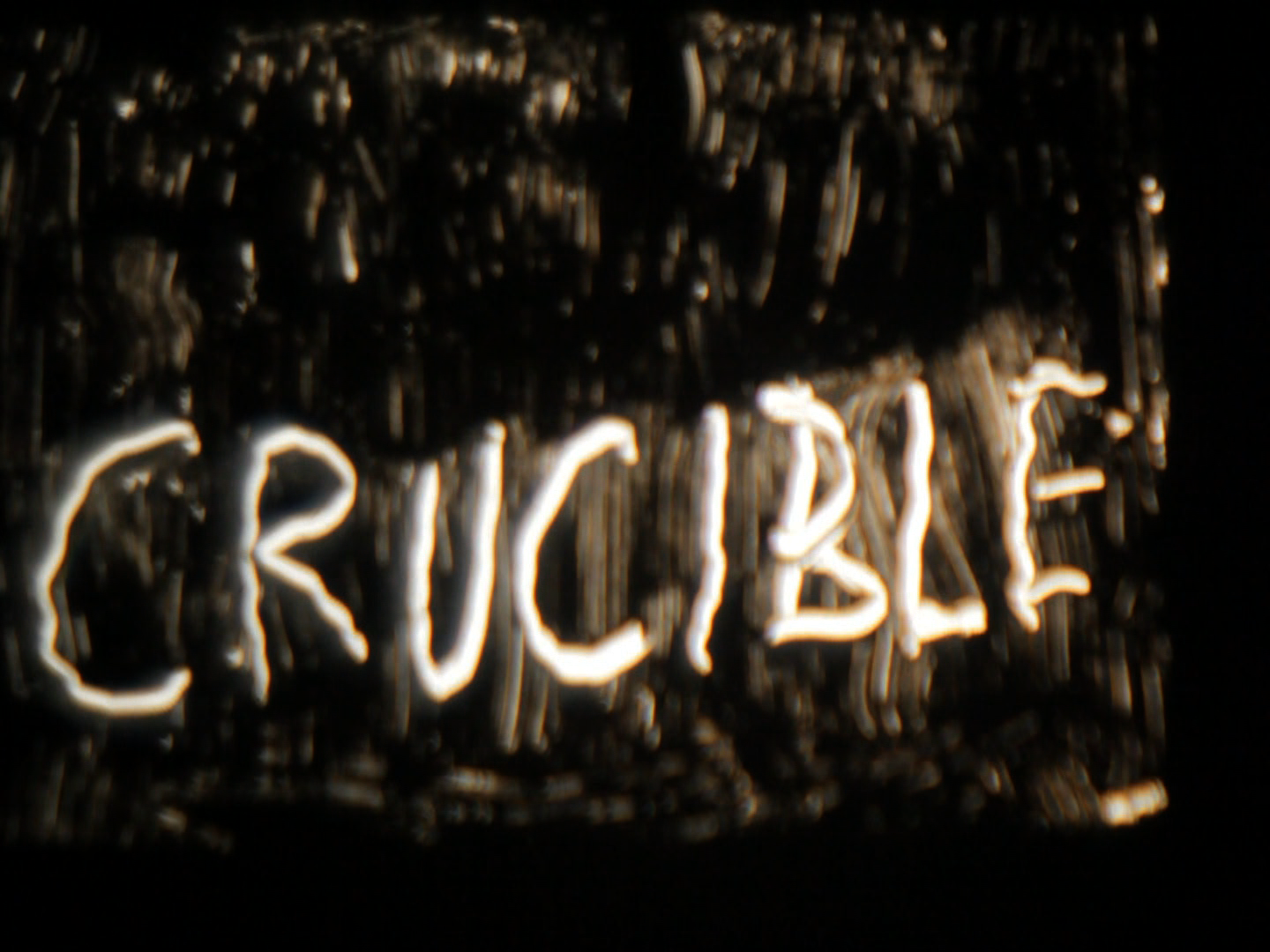
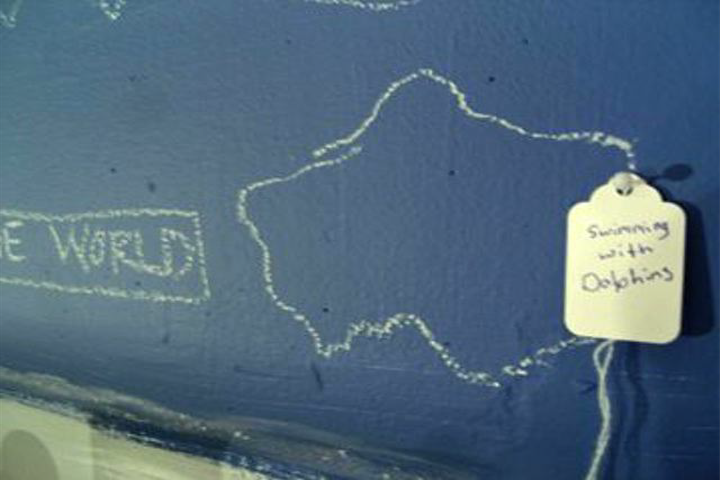
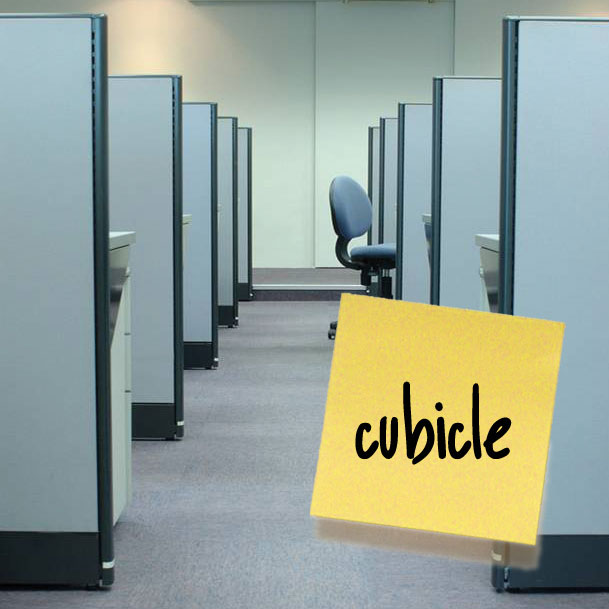
BY WHAT CRITERIA COULD A PERFORMANCE CRITIC MEASURE THE SUCCESS (that is, the effectiveness and intelligence, cultural relevance and emotional resonance) of Skewed Visions‘ innovative new project, Cubicle, a series of web podcasts loosely based on ideas about “work”? The company is well known for creating “original performances tailored to specific locations.” But what does “site-specific” mean when performances occur only on a website? Is the whole of the internet the “site” in question? Or, just the website? Or, is the formative site better understood as the stated topic of the webcast series, i.e. the office cubicle?
As a participant/observer, researcher and reviewer, and scholar of site-specific performance — meaning I’ve seen a lot of it, across the country, in the last 15 years — my definition of what constitutes “site-specific” work has, itself, acquired a degree of specificity. In brief, I’ve found that the most successful (see above) and fulfilling performances related to a site off the concert stage are those which most deeply plumb the cultural, historical, and aesthetic matrices of the work’s location, bringing fresh and engaging interpretations of place to light through performance.
Cubicle introduces new and intriguing iterations on both the concepts of site and specificity. The first four podcasts were created and filmed in office spaces (the idea of office space acquires a fantastical, fictional meaning in the fifth podcast); the short films were then digitally edited for presentation on the Skewed Visions website, and meant to be watched on one’s computer while at work. In this way, “site” becomes a three-fold notion in which time and space are, well, skewed. Seen another way, as you watch these short films, time, space, and site are layered and intertwined in the cyber-presence generated between the moving digital images and the viewer’s perception, as the mind melds onscreen performance with personal experience and interpretation. Engagement, in this context, is key: The depth of engagement with a specific, central site reflected in each performed piece is directly proportional to the viewer’s engagement (and thus enjoyment and enlightenment) with the work.
That said, of the five installments currently on the website, Charles Campbell’s Still Life: When You’re Away the Walls Speak Your Name, (October 2009) is among the most successful of these works. The piece not only delves into the textures, décor, and objects of the generic cubicle (doing so with an acute curiosity that brings these fixtures to life), but also into the dreams and realities of the cubicle occupant. The result is a hilarious and poignant exploration of space, time, and work.
Campbell plays against the horrific banality of the typical office cubicle — the neutral colors, the awful textures, the hard objects, and surfaces. The ten-minute piece opens with a bombastic, dramatic piano score, against which bland images of tan walls, a hand resting on a desk, and even Campbell’s pale, lined face provide contrast. Inter-cut with these images of stillness are pictures of a rain-wet highway curving through an autumn woods alive with color, a lake and shoreline covered with blue ice, and the piercing, full-throated clarity of birdsong.
The cubicle is suddenly animated as a version of “Volare” soars through the quiet. An accordion file breathes. A file cabinet sighs then bursts open, as if with relief. Chairs dart down aisles. Tacks dance across a wall. Cubicles spin by in a blur. Masterful editing facilitates a rhythm to the movement that dovetails impeccably with the music, bringing the workplace alive.
The fifth and most recent installment, The Crucible: A Cubicle (March 2010) by Michael Sommers of Open Eye Figure Theatre, is a fanciful piece whose site is entirely fabricated, an office of dark imagination: it’s a dingy, shadowy furnace-room sort of set inhabited by a weeping, moaning puppet named Darren. Hollow-eyed, with dark hair and chiseled features, and wearing a suit, Darren is the pop-cultural advertising executive fallen on hard times, banished from the polished work spaces of Bewitched or Mad Men to toil in the corporate basement.
His “crucibles” include various office tasks delegated to him through the walls, by alarm clocks, levers, horns (through which a muffled voice orders, “Task! Task!”); motivational signs that flash up on the screen from time to time remind Darren to “facilit + ate” or “evalu + ate” or even to “procrastin + ate.” The relentless repetition and mindlessness of these tasks alternately worries, agitates, and aggravates Darren, whose ultimate entrapment (as if he weren’t already a horrific representation of physical containment, emotional desperation, and intellectual constraint) is his literal burial under a mountain of paperwork. His eventual entombment in a mound of shredded paper pitches Darren into a fit of hysterics that is profoundly unnerving.
Like Campbell, Megan Mayer also sets her Over Time, (November 2009) in an empty, after-hours office place, where she, alone in the space, is the focus. (Imagine an “administrative assistant” locked in her workplace after an office party, and you’ll get the picture.) Mayer hangs over desks, lies on the floor to spoon the file drawers, and climbs across rows of cabinets, merging her athletic body with the hard angles and bland surfaces of the furniture. Mayer thrusts her face into the green glow of a copy machine, as if in a horror movie. The real nightmare communicated here, perhaps, is the notion of modern labor as a sort of imprisonment — and not just for a night, but lasting a lifetime; Mayer’s piece explores the human textures and consequences of work that’s boring, repetitious, and never-ending.
Sean Kelley-Pegg’s profound and brilliantly disturbing Decoy: Intrigued and Repulsed by a Suit (January 2010) manifests a similar sort of work-nightmare, and takes it to its visual extreme. In this six-minute work, he dons a mask of his face in which his features have been copied, deconstructed, and reassembled to create a distorted, Dadaist version of his actual visage. He wears a giant, brown-paper suit that restricts his motion to a slow, lumbering pace. He’s the worker as Frankenstein. His job? To solve the Rubik’s Cube. His problem? He’s always one color-block away from perfection.
Like the unsolved cube, the character is a puzzle of unaligned pieces. The piece prompts questions: who do we become when we work or go to work? Who are we underneath our carefully constructed personas? On a more abstract level, Kelley-Pegg’s imagery touches on questions of cosmetic surgery as a kind of personal visual art and, conversely, about how art, from Dada to post-modernism, communicates the ravages of time, culture, war, and politics on our sense of self. Decoy is an extremely quiet work; there’s little sound and motion inside the office; the most dynamic element is the fast-forwarded movement of the LRT and passengers we view through a window. The contrast, between the stultifying quiet inside the office space against the activity outside its window, emphasizes both the haunted nature of the character and the conundrum of the monster’s daily work.
In contrast with the above-mentioned episodes, Krista Kelley Walsh’s piece, The Survival Skills of Odysseia; or How to Address the Confines of Your Own Cubicle, (December 2009) fails to engage deeply with notions of site and work, or time and space. With a girlish sweetness, the piece explores Odysseia’s (home?) office and her fantasies of exploration, manifested largely through maps, which paper the walls and are cut out to line the soles (souls?) of her shoes. Maps even trim the underside of the collar and button placket of her dress. As the character looks out through the wrong end of the binoculars, the irony and insularity of this piece is brought home (so to speak). And that may be the point.
But the other webcasts in the series — vignettes that bring us the man in the paper mask, the woman “home alone” at the office, sighing cabinets juxtaposed with birdsong, and the puppet without a real purpose — reveal more to me about the nature of modern work, as it’s lived at my own desk. These are the pieces that engage my perception with images that feel authentic to the lived experience of how time, space, site, and cyberspace are layered throughout my everyday. And because of that, these works linger long after I’ve logged off.
______________________________________________________
Related media:
You can watch all five episodes in the webcast, Cubicle, on the Skewed Visions website.
______________________________________________________
About the author: Camille LeFevre is an arts journalist, college professor, and scholar of site-specific performance.